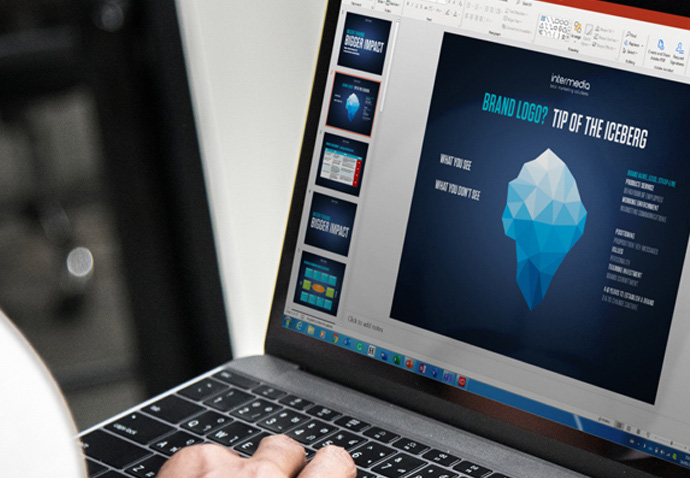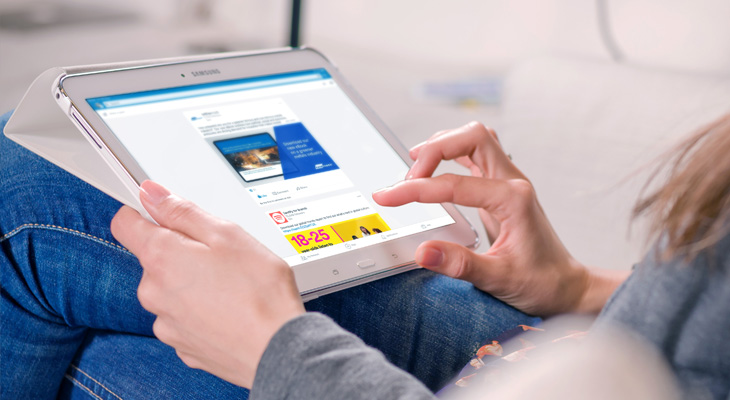Branding | 10 min. read
How to Measure How Successful Your Brand Is
Written by Nik Stapleton, 22.02.2023

Knowing how to measure how successful your brand is, is essential – ‘If you can’t measure it, you can’t manage it.’ It’s a business adage as old as the hills. One that speaks to the importance of measuring every aspect of your operation. From the machines that manufacture essential widgets to your expenditure on washroom consumables.
When it comes to measuring the success of your brand, though, we’d suggest an alternative: ‘If you can’t measure it, you can’t improve it.’ Because, as marketing professionals, strengthening our brand, improving its reach and increasing its value should be the focus of our efforts, day in day out.
In simple terms, for every marketing strategy we put in place, we need to know three things:
- Whether it’s working
- How well it’s working
- How to fix it if it’s not
And to know those three things, we have to have reliable, repeatable ways to measure them.
That’s why metrics are so crucial to a successful brand. They can tell us what drives customer loyalty and brand equity. How well our brand is delivering the value proposition we’ve set for it. Or when we need to make ‘course corrections’ in our marketing plans as conditions change and new challenges from rival businesses emerge.
Bigger Thinking Bigger Impact
Before you start to think about metrics, ask yourself why you’re doing this and your long-term goal for the business. Financials are key if your focus is on M and A as an exit strategy or alternatively as a growth strategy to acquire other brands. Interbrand publish annual brand valuations and league tables. They explore a range of metrics as their methodology. Perhaps the most interesting aspect is the global comparison and perception of brands to illustrate differences and similarities. The annual changes are interesting and require insight into global dynamics in the external environment. Such as new competitors and new technology is driving the ever-changing landscape. Measuring brand success requires an understanding of the different global market dynamics to provide a complete picture of the situation.
In recent times we’ve seen businesses and brands rise rapidly, others crash and burn, the power of social media to rejuvenate or kill. Over time there have been significant shifts in economic structures and power and today is perhaps the fastest yet. For strategic marketers, the key is to focus on the bigger picture and really measure those changes – and keep looking for new developments – the curveball, that you can capitalise on in the future.
Getting the Measure of Brand Success
So, how to measure how successful your brand is? There are many ways of tracking and quantifying brand strength and performance. And just as many articles and blog posts offering their own views and methods.
In this post, we’ll explore what we believe are the most important things to understand about brand metrics:
- Why the easiest and most obvious metrics don’t always tell the whole story
- Why ‘softer’ brand values are just as important to measure as hard sales figures
- The importance of interaction, engagement and participation to brand metrics
- What to measure to find out how successful your brand is

Brand Success Isn’t Just Measured in Short-Term Sales Figures
One of the first things people do when they’re asked to measure a brand’s success is reach for figures that show a steady increase in sales and a consistent improvement in ROI [if they have them, that is].
That’s as true for the most junior marketing executive as it is for senior CMOs. And it’s not an unreasonable thing to do. After all, why invest money in building a brand if it’s not going to deliver a financial gain?
Anyone who’s worked in a busy marketing department will know about the relentless pressure from the board to deliver cheaper leads, increased demand and better short-term sales figures. Week after week, year after year.
Because it’s easier to do that with tactical activity and performance marketing than it is with long-term brand strategies, that’s where so much of today’s marketing effort lies. Especially since the rise of digital marketing metrics that give us information on click-through rates, reach, and sales figures in near real-time.
Inevitably, the data they yield has become almost the default industry method of measuring brand success. But they only tell half the story.
If we want to understand the true strength of a brand, we have to look beyond the top-line figures to measure the deeper values that build and sustain brand success.
There Are Two Sides to Every Successful Brand
One of the most influential theories on branding that has emerged in the last ten years is the notion of a ‘two-track’ brand process.
The first, consisting of short-term lead generation and sales activation, delivers a correspondingly short-term increase in sales. The second, focusing on strategies to build the brand and create a unique, ownable position in the market, delivers long-term sales, increased value and customer loyalty.
Suffice to say here, it’s the marketers who can balance tactical and strategic activities that benefit from the combined effect of both: Regular spikes in demand and sales from tactical marketing; long-term demand, positive brand equity and higher margins from strategic activity.
How a Strong Brand Is a Measure of Long-Term Success
There are other benefits too, in having a strong, recognisable brand that doesn’t rely on continuous discounting or tactical promotions to generate sales.
For example, it will help you create and sustain a premium price for your product. It will protect your market share by building brand loyalty and making it harder for rival brands to compete in your territory. And it will provide a guaranteed source of long term sales and future income for your business.
So measuring the strength of things like brand values, brand equity and brand reputation is just as important as counting weekly sales figures if we’re to bring more value into the business through our brand.
The challenge for marketers is that such things are much harder to measure than conventional business data.
For a start, branding success is often measured using qualitative methods over a long period. Sometimes years. In the current ‘results now’ climate, it’s a lot to ask your board to hang 50% of the company’s marketing budget on.
Secondly, much of what you need to measure are the ‘soft’ metrics. Things that are seen or felt at an emotional, even an unconscious level.
We all like to think we make rational purchase decisions, especially in a B2B context. But that’s not strictly true. In many cases, our choices are based at least in part on values and emotions we associate with a particular brand, even if we don’t know it.
The task is to find a way to measure how effectively your brand triggers those emotions in your target audience.
So How Do We Measure Brand Strength?
One of the most trusted methods of finding out how deep your customers’ connection with your brand goes is to measure three key indicators:
- Interaction
- Engagement
- Participation
Together, these reference points can tell you how important your brand is to your audience, on a scale of ‘slightly interested’ at one end to ‘passionately committed’ at the other.
Let’s look at each one in a bit more detail:
Interaction
Any time a person connects in some way with your brand – a click-through on an email, a visit to your store, a video viewing – that’s an interaction.
Interactions are good. But they’re only the starting point for a possible future relationship. A way for potential customers to ‘try before they buy’ without commitment.
So although likes, shares and other interactions are nice to have, don’t make the mistake [as many do] that they indicate a relationship with your brand. They don’t. For that, we have to move on to the second metric – engagement.
Engagement
Engagement is what happens when the emotional investment customers make in your brand goes a little deeper. It’s when a person actively responds to a request or call to action, or volunteers information. When they give you their email address, sign up for regular newsletters or pre-order ahead of a product launch, for example.
When customers are engaged, it’s a positive signal of brand strength. It means, for the time being at least, a potential customer is considering your brand in their shortlist of choices. But they can always be tempted by a better offer. Engagement alone can’t lock them into your brand in the long run. To do that, you need participation.
Participation
When a customer participates in your brand, it represents the deepest level of emotional investment. Participation includes frequent purchases. Sharing those purchases on social media. Recommending your company to others. And actively embracing fan-boy or girl status by sporting merchandise – or even in, extreme cases, brand tattoos!
That kind of brand worship is at the very far end of the participation scale and usually reserved for high profile fashion, sports or tech brands.
But even conventional B2B brands can connect with their audience to a point where they become not just customers, but evangelists for the brand cause. Iconic names like JCB, for instance, carry such weight not only because they make fantastic earth-moving machines. But also because enough people have enough affection for the brand to wear JCB, sometimes literally, on their sleeve.
How to Recognise and Measure Interaction, Engagement and Participation
Interaction, engagement, and participation are key concepts when you want to measure how successful your brand is. And at some point, you have to start quantifying how much of each exists in your relationship with customers.
Earlier, we said digital metrics have almost become the default way of charting brand strength, with results skewed towards short-term sales and lead generation. But online activity can tell us a lot about those ‘softer’ brand metrics, too. Here’s how:
Online Advertising
For so long, so much brand advertising was viewed with suspicion by CFOs and CEOs because its effect was so difficult to measure. That was in the days of glossy magazine ads and corporate campaigning. But with the arrival of online advertising, it’s become much easier to see the link between brand messaging and customer responses.
If you run a digital ad offering a limited-time discount, you know everyone who clicks through is interested in your offer. Likewise, if you run an ad centred around your brand, you know each click represents a customer who’s at least at the investigative stage of their relationship with you.

Website Visits
Your company website can be a gold mine of information about the strength of your brand.
Today’s audience tracking algorithms unlock all sorts of insights about how people behave when they view your site, which pages they linger on and which they skip.
Longer dwell times on ‘About Us’ or ‘Our Story’ pages indicate a willingness to engage at a deeper level. While customers that go straight to your e-commerce pages to compare prices are showing less of a connection.
Over time, such data can help you map visitor behaviour to purchase patterns. Identify where your brand story needs to be strengthened. Or refine the elements of your website that encourage deeper engagement.

Key Message Searches
‘User intent’ is the term web analysts use to categorise the different ways people seek information online. So what search terms are your customers using to find their way to your site?
If they’re transactional [‘Where to buy the cheapest widgets.’ ‘Best business insurance quotes’] it means their main priority is price, with little or no consideration for brand choice.
But if their searches are informational [‘Ways to reduce industrial process emissions’. ‘Motivating and retaining employees’], it can be an indication they’re looking for engagement with businesses that follow sustainable principles or advice on progressive employee management.
In other words, the ‘softer’ values that resonate with their own view of the world and encourage emotional engagement with a brand.
SEO Performance
SEO performance is a ready-made way to measure brand strength. By building more brand value keywords into your web copy and Google ads, you can see how many people respond to your brand-led messaging.
In its simplest terms, this means testing the effect of keywords and phrases over time. Even, if you have the resources, conducting split tests that pitch one message against another in your online advertising. Or direct visitors to one of two alternative web pages focusing on different aspects of your brand story.
The Intermedia Approach – Bigger Thinking Bigger Impact
Focus on the reason to measure in both strategic and tactical terms. Consider your overall strategy, including M and A, exit points and ensure that you can build a Brand Metrics Measurement System to show:
- Authenticity
- Relevance
- Differentiation
The techniques we’ve outlined above are examples of how to measure brand success. There are many more we can build with you for your business. As with most things marketing, there’s no ‘one size fits all.’ Not if you want to do things properly, anyway.
As a strategically-led marketing agency, metrics are at the heart of everything we do for our clients. But what you measure – and how you measure it – depends entirely on your circumstances.
So an essential part of our communications planning process is defining the metrics that help you keep track of their performance.
At every stage, we’ll be checking back to measure, appraise and adjust whatever’s necessary. So you get the information you need and the results you’re looking for to make every penny of your marketing budget do more.
When it comes to measuring what really matters, talk to the experts. Talk to Intermedia.
Originally published February 22, 2023 12:07pm, updated April 19, 2023
